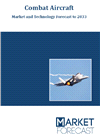On July 27, 1972, the Boeing [NYSE: BA] F-15 flew for the first time with Chief Test Pilot Irv Burrows at the controls. Fifty years later, the undefeated F-15 continues to evolve and add advanced capability to the U.S. Air Force fighter fleet.
“Boeing is proud of the F-15’s proven performance and of our shared legacy on this platform with the U.S. Air Force and operators around the world,” said Prat Kumar, vice president of F-15 Programs. “With its unrivaled combat performance, five decades-long production run and continuous evolution, the F-15 has a remarkable history and continues today to be a critical asset for U.S. and allied forces. And with the development of new, advanced capabilities and the evolution of the F-15EX, the best is yet to come.”
Boeing’s F-15 program was initiated at the request of the U.S. Air Force, which needed a fighter jet designed to maintain the country’s air superiority. Through its variants, the F-15 has also served that mission internationally with numerous global customers including Japan, Israel, Saudi Arabia, Singapore, South Korea and Qatar.

Market forecast by Region, Type, and Fitment. Technologies and Market Overview, Critical Raw Materials, Country Analysis, Opportunity Analysis, and Leading Companies
Download free sample pages More informationThe newest F-15, the F-15EX Eagle II, delivers a state-of-the-art electronic warfare system, along with contemporary sensors and avionics. The airframe, known for its unrivaled payload capacity, is capable of carrying next-generation hypersonic weapons.
The F-15’s manufacturing process has also evolved over the years to include digital design and automation and tooling, including revolutionary full-size determinant assembly advanced manufacturing processes.
“Boeing’s modernized manufacturing process improves quality while decreasing time and costs,” said Kumar. “We’ve seen increased global interest in the contemporary F-15 and its next-generation capabilities.”
More than 1,500 F-15s are in service worldwide. The U.S. Air Force took delivery of its first F-15EX in March 2021.